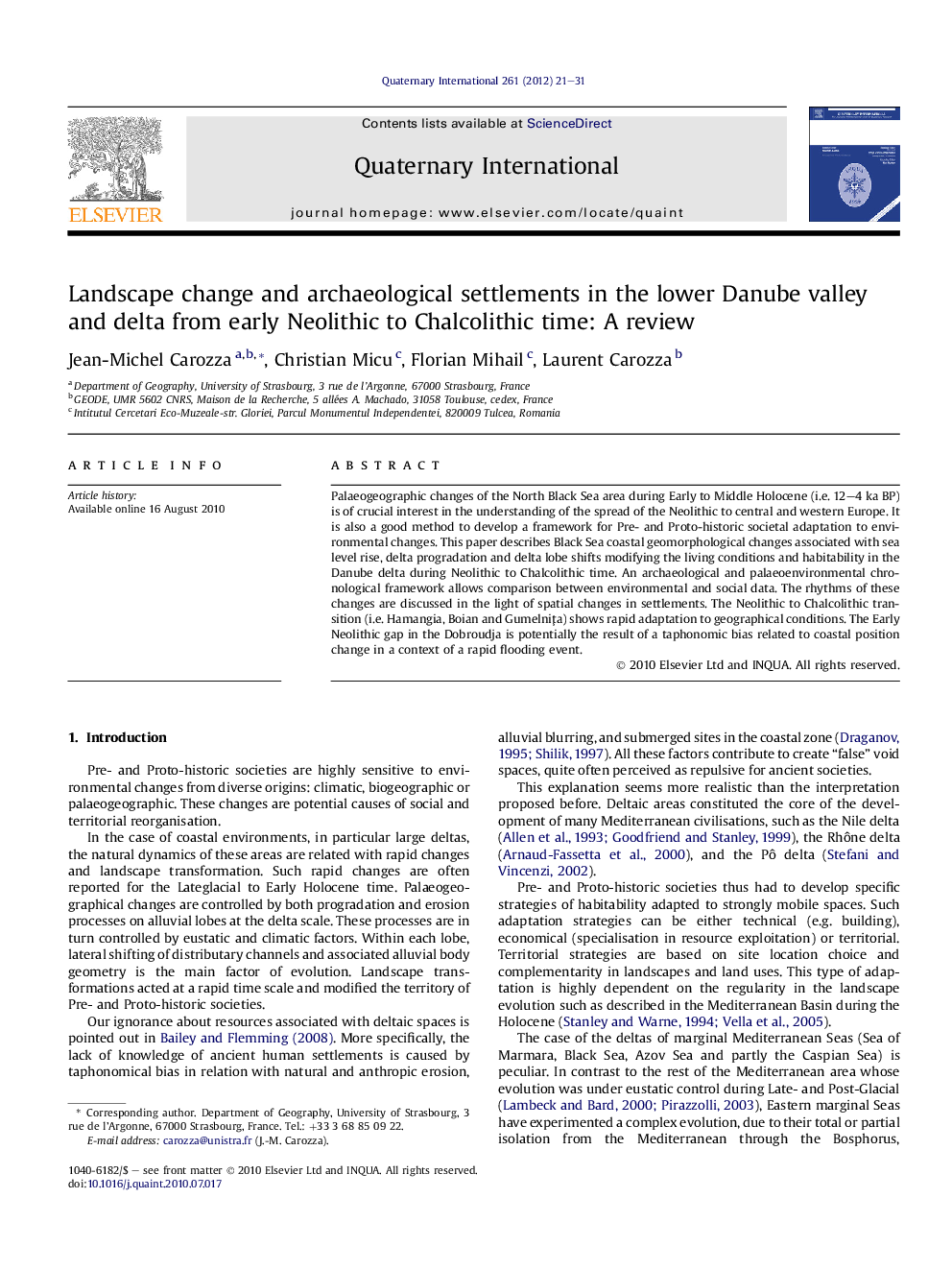| Article ID | Journal | Published Year | Pages | File Type |
|---|---|---|---|---|
| 1042722 | Quaternary International | 2012 | 11 Pages |
Palaeogeographic changes of the North Black Sea area during Early to Middle Holocene (i.e. 12–4 ka BP) is of crucial interest in the understanding of the spread of the Neolithic to central and western Europe. It is also a good method to develop a framework for Pre- and Proto-historic societal adaptation to environmental changes. This paper describes Black Sea coastal geomorphological changes associated with sea level rise, delta progradation and delta lobe shifts modifying the living conditions and habitability in the Danube delta during Neolithic to Chalcolithic time. An archaeological and palaeoenvironmental chronological framework allows comparison between environmental and social data. The rhythms of these changes are discussed in the light of spatial changes in settlements. The Neolithic to Chalcolithic transition (i.e. Hamangia, Boian and Gumelniţa) shows rapid adaptation to geographical conditions. The Early Neolithic gap in the Dobroudja is potentially the result of a taphonomic bias related to coastal position change in a context of a rapid flooding event.
